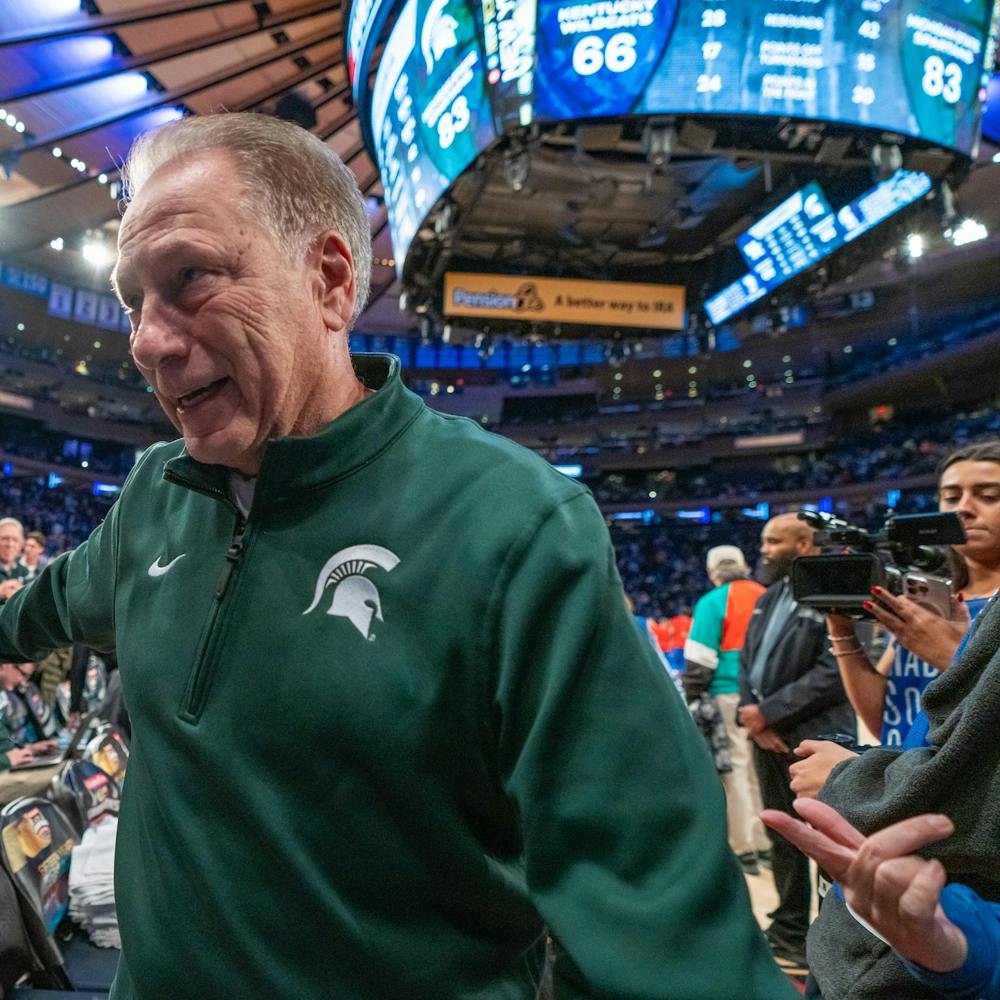As a veterinarian and owner of two rehabilitated racehorses, Elizabeth Carr knows the satisfaction of providing injured horses with a future.
“The opportunity to give them a second chance at life and find a home where someone can give them care (is very rewarding),” said Carr, a veterinarian in the MSU Large Animal Hospital.
Carr and countless others have benefited from equine medical procedures performed by the MSU Large Animal Hospital.
Working in unison with the Communication Alliance to Network Thoroughbred Ex-Racehorses, or CANTER, the animal hospital administers medical care to about 60 horses each year. The two organizations take thoroughbreds from the racetrack and prepare them for alternative careers as jumpers, dressage horses and simple pets, among other occupations.
“(The program) benefits the horses, the resident veterinarians who are studying to become specialists and the people who ultimately own the horses,” said Patrick LeBlanc, director of the MSU Veterinary Teaching Hospital.
One of the horses currently receiving treatment, Baltic Hydra, suffers from a hind sesamoid fracture — a fracture to small bones in the horse’s back leg, according to the American Association of Equine Practitioners Web site. The horse’s trainer said Baltic Hydra was sound, but further examination from CANTER revealed a broken leg, CANTER treasurer Robbie Timmons said in an e-mail.
In order to ensure their injured or noncompetitive horses the opportunity to succeed in another field, many owners donate or sell them to CANTER, a national all-volunteer organization dedicated to restoring racehorses — regardless of the extent of their injuries — and providing them with new owners.
“Before CANTER was founded in 1997, the major option for injured or noncompetitive race horses was to be sold for slaughter, with the horse meat’s only use for human consumption as ‘gourmet’ food in restaurants overseas,” Timmons said.
Checking for possible injuries, CANTER evaluates the horses and sends them to MSU, which houses the state’s only veterinary teaching hospital. A team of surgeons, vet students and resident veterinarians utilize the Large Animal Hospital’s full range of surgical services to perform the operation.
Arthroscopic surgeries to remove bone chips in the knee are the most common procedures, Timmons said, adding that most of the animals on the receiving end are just 3 and 4 years old.
“Many race horses are relatively young, so we can get them over the hump with medical procedures,” said Fred Derksen, a professor who works at the MSU Veterinary Teaching Hospital.
Timmons said CANTER has taken in 170 horses this year, with about 60 percent requiring surgery due to racetrack injuries.
Every expense along the way is paid for by CANTER and an Equine Rehabilitation Fund has been created at MSU to help with some of the costs.
Upon completion of the treatment, horses travel to a boarding center where they spend up to a year recuperating and awaiting a new owner.
Posted on the organization’s Web site is a description of each available horse, including a summary of its medical procedures and price.
“The prognosis is usually very good for thoroughbreds who have surgery at MSU, and many are enjoying life in new green pastures wand even competing in horse shows,” Timmons said.
Support student media!
Please consider donating to The State News and help fund the future of journalism.
Discussion
Share and discuss “After the races” on social media.





